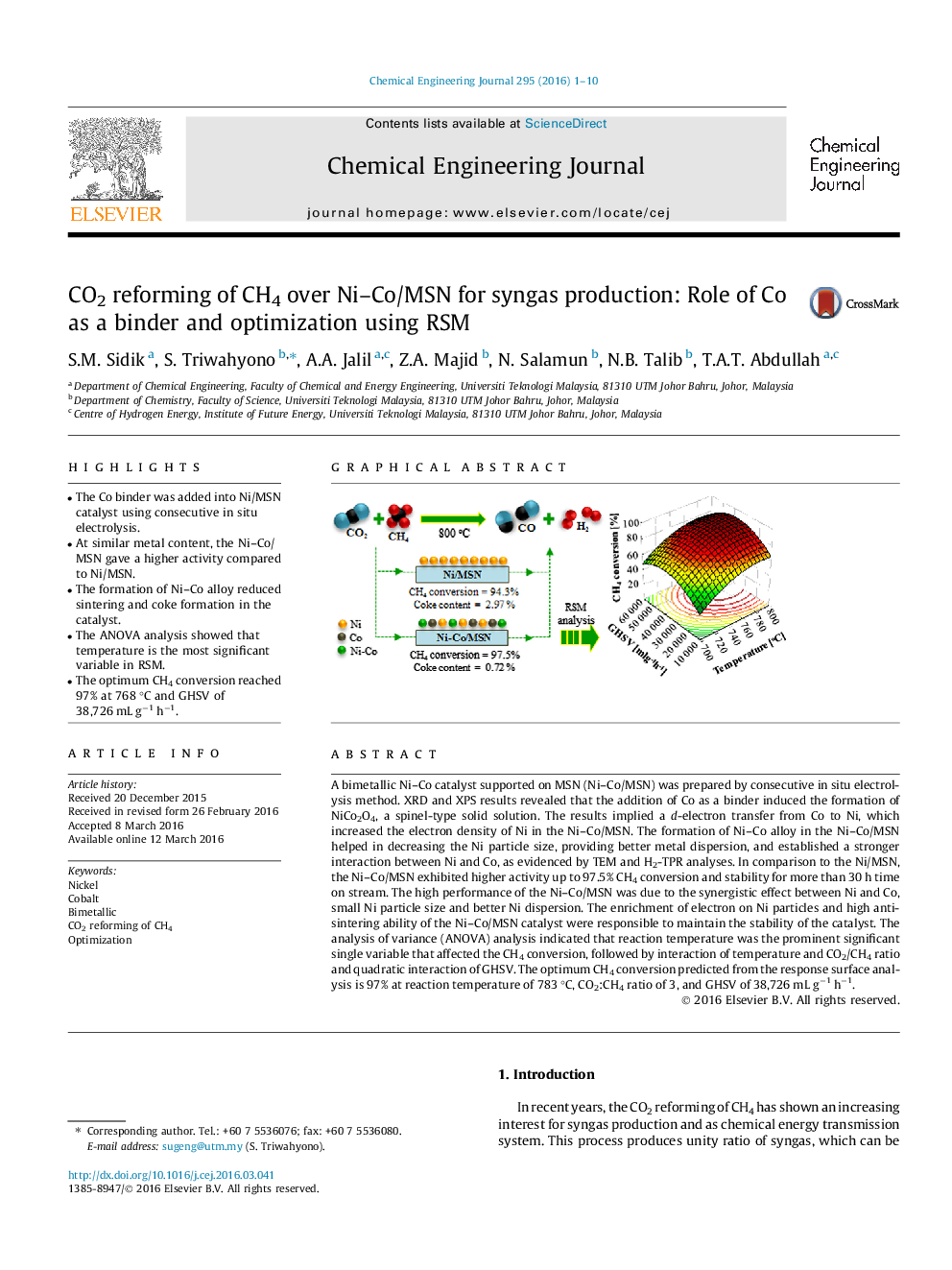| کد مقاله | کد نشریه | سال انتشار | مقاله انگلیسی | نسخه تمام متن |
|---|---|---|---|---|
| 145630 | 456345 | 2016 | 10 صفحه PDF | دانلود رایگان |

• The Co binder was added into Ni/MSN catalyst using consecutive in situ electrolysis.
• At similar metal content, the Ni–Co/MSN gave a higher activity compared to Ni/MSN.
• The formation of Ni–Co alloy reduced sintering and coke formation in the catalyst.
• The ANOVA analysis showed that temperature is the most significant variable in RSM.
• The optimum CH4 conversion reached 97% at 768 °C and GHSV of 38,726 mL g−1 h−1.
A bimetallic Ni–Co catalyst supported on MSN (Ni–Co/MSN) was prepared by consecutive in situ electrolysis method. XRD and XPS results revealed that the addition of Co as a binder induced the formation of NiCo2O4, a spinel-type solid solution. The results implied a d-electron transfer from Co to Ni, which increased the electron density of Ni in the Ni–Co/MSN. The formation of Ni–Co alloy in the Ni–Co/MSN helped in decreasing the Ni particle size, providing better metal dispersion, and established a stronger interaction between Ni and Co, as evidenced by TEM and H2-TPR analyses. In comparison to the Ni/MSN, the Ni–Co/MSN exhibited higher activity up to 97.5% CH4 conversion and stability for more than 30 h time on stream. The high performance of the Ni–Co/MSN was due to the synergistic effect between Ni and Co, small Ni particle size and better Ni dispersion. The enrichment of electron on Ni particles and high anti-sintering ability of the Ni–Co/MSN catalyst were responsible to maintain the stability of the catalyst. The analysis of variance (ANOVA) analysis indicated that reaction temperature was the prominent significant single variable that affected the CH4 conversion, followed by interaction of temperature and CO2/CH4 ratio and quadratic interaction of GHSV. The optimum CH4 conversion predicted from the response surface analysis is 97% at reaction temperature of 783 °C, CO2:CH4 ratio of 3, and GHSV of 38,726 mL g−1 h−1.
Figure optionsDownload as PowerPoint slide
Journal: Chemical Engineering Journal - Volume 295, 1 July 2016, Pages 1–10